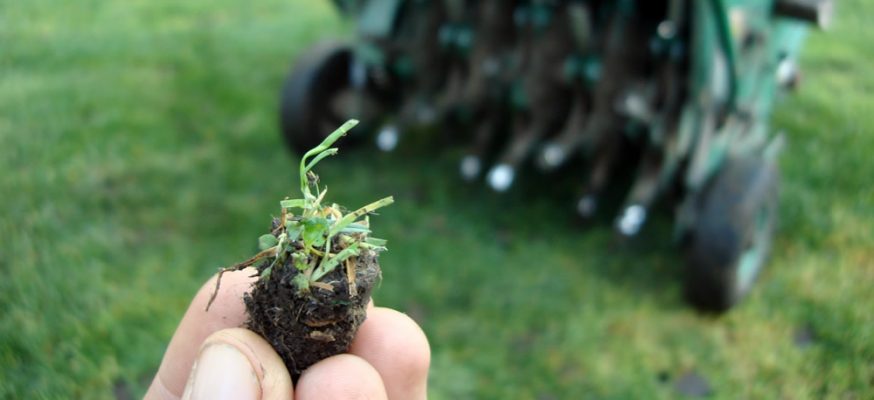It seems like a normal enough day sitting in your backyard enjoying a nice cold beverage after a long day at the office when your neighbor walks out. He throws you a wave and you notice the spear looking object in his hand. Curiosity aroused, you watch as he begins stabbing at the yard with the two pronged spear. Well, you think, it finally happened, your neighbor has lost his mind. Possibly, but more likely he’s attempting to aerate his lawn the hard way. Lawn aeration may seem strange (or LOOK strange if someone approaches it like this), but it actually offers numerous benefits.
Your lawn is a living organism, just like you. It needs to breathe in oxygen, absorb water, and receive nutrients. Aeration alleviates compacted soil and allows air, water and fertilizer to penetrate and roots to grow. A machine or manual tool called an aerator works by removing small plugs of soil and thatch from your lawn creating aerating holes. These plugs are left on the ground allowing them to break down and release nutrients back into the lawn.
Your lawn is a living organism, just like you. It needs to absorb oxygen, water and nutrients. Share on XThe University of Maryland recommends using an aerator that creates plugs 2-3 inches long and about 1/2 inch in diameter. In addition, choose an aerator that distributes the plugs on the surface of the lawn not a machine that simply creates holes. Aeration is best done during peak active growing season such as mid-August to mid-October for cool season grass such as Kentucky bluegrass and Fescues. Warm season turf like Zoysia and Bermudagrass may be aerated in the fall.
For more information on how lawn aeration produces a thick, healthy, and luxurious lawn, contact Rasevic today. Serving the Bethesda, MD, Greater Washington, DC, and Baltimore areas, Rasevic operates three distinct companies offering a range of services to fit your needs including new home construction, full service landscaping (including lawn aeration services), and commercial snow removal.
Share this Post

